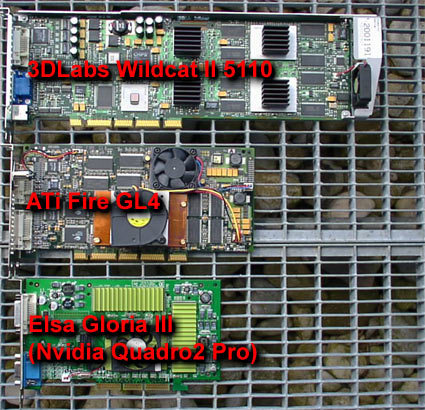OpenGL Workstation Power - Graphics Cards for the Professional User
Tips And Recommendations
3Dlabs's Wildcat II 5110 kicks up quite a brouhaha. Not only was it able to break the 200 fps threshold in Viewperf AWadvs-04 in our testing platform, but it takes the lead in more than half the benchmarks. You can see that 3Dlabs has fine-tuned this product to work impeccably with high-end applications like ProEngineer. Anyone working with expensive, top-of-the-line software such as ProEngineer ought not to make do with the cheaper competitors when it comes to getting a graphics card. The Wildcat II 5110 is also the most expensive product we tested which goes to prove that quality does have a price in the high-end OpenGL market.
Not just in size, but also in price, ATI's Fire GL4 is a mid-range product. Anyone who works a lot with an application like 3D Studio Max ought to pick this card. The Fire GL4 does very well when handling complex models, provided that the textures used aren't too detailed. For the lion's share of projects dealing with wireframe models and shading models, the Fire GL4 can satisfy any and every designer.
Elsa's Gloria III falls into the value segment for high-end OpenGL applications. This Quadro2 Pro card is available for as little as $1,000. Although this board isn't intended for use with the more expensive, high-end industrial applications, it still attains good performance scores for a wide range of application profiles. The large base of AutoCad and 3D Studio Max users will find all they need in this product. The Gloria III can handle most everyday design project needs. The Gloria III even offers some relaxation for overworked designers during their lunch break or after office hours - the performance while running Direct3D and OpenGL games such as Quake 3 is tremendous. The same can't be said for either the Fire GL4 or the Wildcat II 5110.
Get Tom's Hardware's best news and in-depth reviews, straight to your inbox.
Current page: Tips And Recommendations
Prev Page ProEngineer 2000i2, Continued Next Page Features Table
